第53章 II(37)
>From the cases given by Mr. Ingleby, I select the following. Two gentlemen, after having been engaged in conducting the post-mortem examination of a case of puerperal fever, went in the same dress, each respectively, to a case of midwifery. "The one patient was seized with the rigor about thirty hours afterwards. The other patient was seized with a rigor the third morning after delivery.
One recovered, one died." [Edin. Med. and Surg. Journal, April, 1838.]
One of these same gentlemen attended another woman in the same clothes two days after the autopsy referred to. "The rigor did not take place until the evening of the fifth day from the first visit.
Result fatal." These cases belonged to a series of seven, the first of which was thought to have originated in a case of erysipelas.
"Several cases of a mild character followed the foregoing seven, and their nature being now most unequivocal, my friend declined visiting all midwifery cases for a time, and there was no recurrence of the disease." These cases occurred in 1833. Five of them proved fatal.
Mr. Ingleby gives another series of seven eases which occurred to a practitioner in 1836, the first of which was also attributed to his having opened several erysipelatous abscesses a short time previously.
I need not refer to the case lately read before this Society, in which a physician went, soon after performing an autopsy of a case of puerperal fever, to a woman in labor, who was seized with the same disease and perished. The forfeit of that error has been already paid.
At a meeting of the Medical and Chirurgical Society before referred to, Dr. Merriman related an instance occurring in his own practice, which excites a reasonable suspicion that two lives were sacrificed to a still less dangerous experiment. He was at the examination of a case of puerperal fever at two o'clock in the afternoon. He took care not to touch the body. At nine o'clock the same evening he attended a woman in labor; she was so nearly delivered that he had scarcely anything to do. The next morning she had severe rigors, and in forty-eight hours she was a corpse. Her infant had erysipelas and died in two days. [Lancet, May 2, 1840.]
In connection with the facts which have been stated, it seems proper to allude to the dangerous and often fatal effects which have followed from wounds received in the post-mortem examination of patients who have died of puerperal fever. The fact that such wounds are attended with peculiar risk has been long noticed. I find that Chaussier was in the habit of cautioning his students against the danger to which they were exposed in these dissections. [Stein, L'Art d'Accoucher, 1794; Dict. des Sciences Medicales, art. "Puerperal."]
The head pharmacien of the Hotel Dieu, in his analysis of the fluid effused in puerperal peritonitis, says that practitioners are convinced of its deleterious qualities, and that it is very dangerous to apply it to the denuded skin. [Journal de Pharmacie, January, 1836.] Sir Benjamin Brodie speaks of it as being well known that the inoculation of lymph or pus from the peritoneum of a puerperal patient is often attended with dangerous and even fatal symptoms.
Three cases in confirmation of this statement, two of them fatal, have been reported to this Society within a few months.
Of about fifty cases of injuries of this kind, of various degrees of severity, which I have collected from different sources, at least twelve were instances of infection from puerperal peritonitis. Some of the others are so stated as to render it probable that they may have been of the same nature. Five other cases were of peritoneal inflammation; three in males. Three were what was called enteritis, in one instance complicated with erysipelas; but it is well known that this term has been often used to signify inflammation of the peritoneum covering the intestines. On the other hand, no case of typhus or typhoid fever is mentioned as giving rise to dangerous consequences, with the exception of the single instance of an undertaker mentioned by Mr. Travers, who seems to have been poisoned by a fluid which exuded from the body. The other accidents were produced by dissection, or some other mode of contact with bodies of patients who had died of various affections. They also differed much in severity, the cases of puerperal origin being among the most formidable and fatal. Now a moment's reflection will show that the number of cases of serious consequences ensuing from the dissection of the bodies of those who had perished of puerperal fever is so vastly disproportioned to the relatively small number of autopsies made in this complaint as compared with typhus or pneumonia (from which last disease not one case of poisoning happened), and still more from all diseases put together, that the conclusion is irresistible that a most fearful morbid poison is often generated in the course of this disease. Whether or not it is sui generis, confined to this disease, or produced in some others, as, for instance, erysipelas, I need, not stop to inquire.
In connection with this may be taken the following statement of Dr.
Rigby. "That the discharges from a patient under puerperal fever are in the highest degree contagious we have abundant evidence in the history of lying-in hospitals. The puerperal abscesses are also contagious, and may be communicated to healthy lying-in women by washing with the same sponge; this fact has been repeatedly proved in the Vienna Hospital; but they are equally communicable to women not pregnant; on more than one occasion the women engaged in washing the soiled bed-linen of the General Lying-in Hospital have been attacked with abscess in the fingers or hands, attended with rapidly spreading inflammation of the cellular tissue."